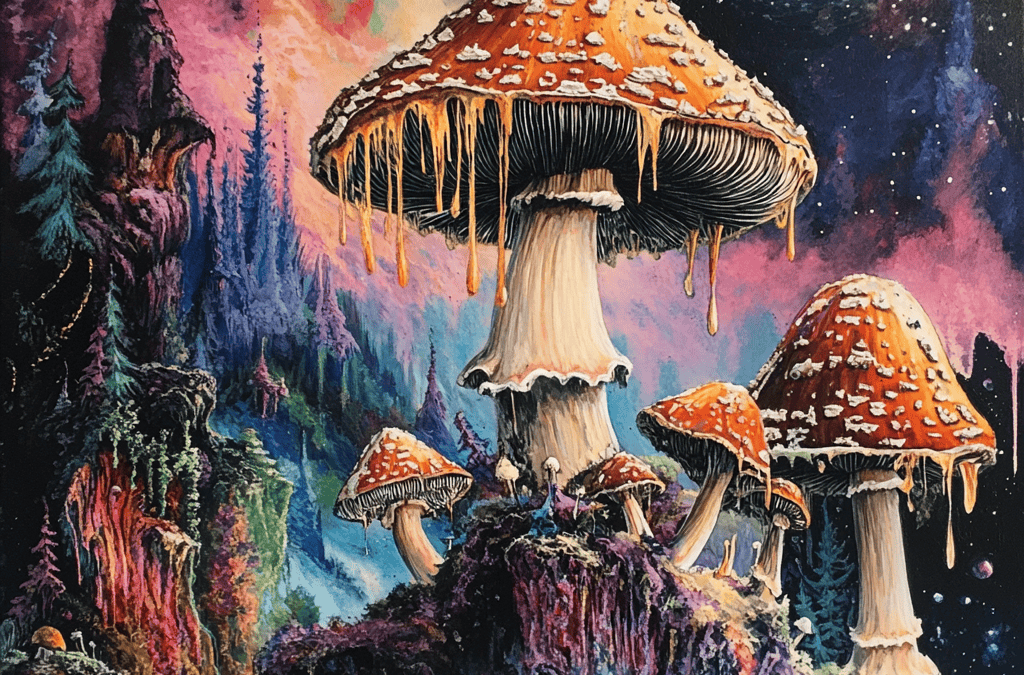For decades, psychedelics have fascinated adventurers, spiritual seekers, and researchers. Among the most popular are psilocybin mushrooms, known as “shrooms,” and LSD, often referred to as “acid.” But what distinguishes these two substances? How do they impact your mind and body? And which might be the better choice if you’re thinking about exploring the psychedelic experience? In this blog post, we’ll highlight key deifferences between shrooms and acid, compare their effects, risks, and potential benefits, and help you make an informed decision.
What Are Shrooms?
Shrooms, or magic mushrooms, are a type of fungus that contains the psychoactive compound psilocybin. This naturally occurring substance is found in over 180 species of mushrooms worldwide. When consumed, psilocybin converts into psilocin in the body, interacting with serotonin receptors in the brain to alter perceptions, emotions, and consciousness. Shrooms have a long history, with evidence showing they were used by ancient cultures for religious and spiritual rituals.
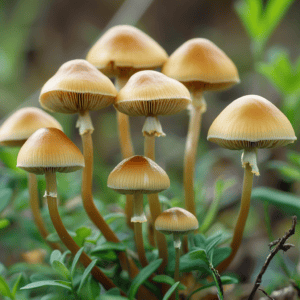
Typically, shrooms are eaten fresh or dried, brewed into tea, or added to food to mask their earthy flavor. The experience of taking shrooms, often called a “trip,” can last between 4 to 6 hours, depending on the dose and an individual’s metabolism.
What Is Acid?
LSD, or lysergic acid diethylamide—commonly known as acid—is a synthetic psychedelic substance. It was first created in 1938 by Swiss chemist Albert Hofmann, who discovered its strong hallucinogenic effects in 1943. Unlike shrooms, LSD doesn’t occur naturally; it’s synthesized in a lab from a chemical derived from ergot, a fungus that grows on rye and other grains.

LSD is usually consumed in the form of small, square paper tabs soaked in the drug’s liquid form. It can also be taken as a liquid or in gelatin squares known as “window panes.” An acid trip tends to last longer than a shroom trip, typically ranging from 8 to 12 hours or even longer, depending on the dose and the user’s response.
How Do Shrooms and Acid Affect the Brain?
Both shrooms and acid primarily influence the brain’s serotonin system, but they do so in slightly different ways. Serotonin is a neurotransmitter that’s crucial for mood, perception, and cognition.
Shrooms
The active compound in shrooms, psilocin, binds to serotonin receptors in the brain, particularly the 5-HT2A receptor. This binding causes altered sensory perceptions, shifts in thought patterns, and changes in emotions. Users often feel a heightened connection to their surroundings and report vivid visual and auditory hallucinations, like seeing patterns or hearing sounds that aren’t actually there.
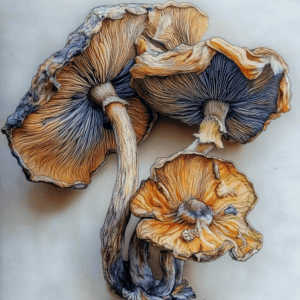
Acid
LSD also binds to the 5-HT2A receptor but affects a wider range of serotonin receptors across the brain. LSD’s influence is more extensive, impacting not just perception but also cognition, emotion, and self-awareness. Many describe an acid trip as more intense and mentally challenging than a shroom trip, with visual hallucinations that are more geometric and fractal-like. Some people even experience “ego dissolution,” feeling as though they have merged with the universe.
If you are interested in reading more about the effects of psilocybin on the brain you can read our blog post here.
Key Differences Between Shrooms and Acid
While both shrooms and acid are psychedelics that alter perception and consciousness, they differ in several significant ways:
Duration of the Trip
A shroom trip usually lasts 4 to 6 hours, while an acid trip can go on for 8 to 12 hours or more. This difference in duration can be important for those who have time constraints or are uncertain about committing to a longer experience.
Intensity and Control
Many users find that shrooms provide a more “natural” and less intense experience compared to acid. The trip can feel more grounded and emotional, with a stronger connection to nature and the environment. In contrast, LSD is often described as a more intense and unpredictable experience, involving deeper shifts in thought processes and self-awareness, making it a more mentally challenging trip for some.
Visuals and Sensory Effects
Shrooms tend to produce more organic, flowing visuals, such as moving patterns or shifting colors in natural ways. LSD visuals are often more geometric, with fractal patterns and more pronounced distortions of shapes and colors. Acid can also produce more intense sensory effects, with some users experiencing synesthesia—a blending of senses, like seeing sounds or hearing colors.
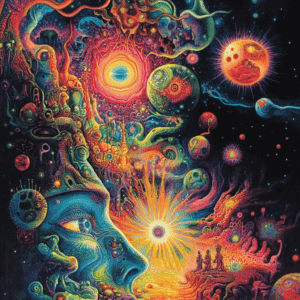
Emotional and Psychological Effects
Shrooms are often associated with a more introspective and emotional journey, sometimes leading to deep emotional releases, euphoria, or moments of profound sadness or fear. LSD, on the other hand, can induce more abstract thinking and a sense of detachment from emotions, resulting in a more analytical or philosophical mindset during the trip.
Risk of a “Bad Trip”
Both shrooms and acid carry the risk of a “bad trip,” where users experience anxiety, paranoia, or intense fear. However, some people find shrooms to be gentler and less likely to lead to a bad trip, especially at lower doses. Acid’s longer duration and more intense effects can increase the likelihood of a challenging experience if the user’s mindset or setting isn’t conducive to a positive trip.
Potential Benefits of Shrooms and Acid
Despite the risks, both shrooms and acid have been studied for their potential therapeutic benefits, and there’s been renewed interest in their use for treating mental health conditions.
Shrooms
Research suggests that psilocybin, the active compound in shrooms, may help reduce symptoms of depression, anxiety, and PTSD. It’s believed that psilocybin promotes neuroplasticity—the brain’s ability to reorganize itself by forming new neural connections—which can help break negative thought patterns. Some studies also suggest psilocybin could assist with addiction, providing a transformative experience that helps people reevaluate their relationship with substances.
If you are interested in magic mushroom retreats and want to learn more go to our blog post here.
Acid
LSD has also been explored for its potential in treating mental health conditions like depression, anxiety, and addiction. Some research indicates that LSD can enhance openness and emotional insight, which may help people explore and process deep-seated psychological issues. There’s also evidence that LSD can reduce anxiety in patients with terminal illnesses, offering a sense of peace and acceptance.
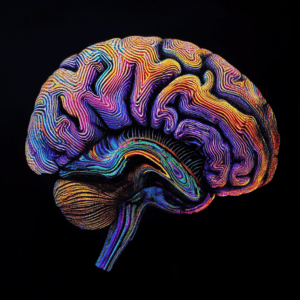
Risks and Considerations
While shrooms and acid have potential benefits, it’s important to recognize the risks associated with their use. Psychedelics can be unpredictable, with effects that vary widely depending on the dose, user’s mindset, and environment.
Psychological Risks
Both shrooms and acid can trigger intense psychological experiences that may be overwhelming or distressing. There’s a risk of having a “bad trip,” characterized by intense fear, paranoia, or panic. In some cases, these experiences can lead to lasting psychological trauma, particularly in people predisposed to mental health issues like schizophrenia or bipolar disorder.
Physical Risks
While psychedelics are generally considered non-toxic, there are still physical risks. For example, shrooms can cause nausea or stomach discomfort, and both substances can increase heart rate and blood pressure. In rare instances, some individuals may develop Hallucinogen Persisting Perception Disorder (HPPD), where visual disturbances or “flashbacks” persist long after the trip ends.
Legal Risks
It’s also crucial to note that both shrooms and acid are illegal in many parts of the world. Possessing, using, or distributing these substances can result in legal penalties, including fines and imprisonment. Be sure to check the laws in your area before considering the use of psychedelics.
Which One Is Right for You?
If you’re contemplating trying psychedelics, you might wonder whether shrooms or acid is the better choice. The answer depends on several factors, including your experience with psychedelics, mindset, goals, and tolerance for intense experiences.
First-Time Users
For those new to psychedelics, shrooms might be a more suitable starting point due to their shorter duration and milder effects. A lower dose of shrooms can offer a gentle introduction to altered states of consciousness without the longer commitment of an acid trip.
Seeking Introspection and Emotional Release
If you’re looking for an introspective experience with a strong emotional component, shrooms could be the better option. Many users report feeling deeply connected to nature and experiencing emotional release during a shroom trip.

Seeking Deep Cognitive Exploration
If you’re interested in exploring altered states of consciousness at a deeper cognitive level or seeking a more intense, mind-bending experience, LSD might be more appropriate. Acid is often linked with profound philosophical insights and altered perceptions of time and reality.
Environment and Setting
No matter which substance you choose, the setting is crucial. A safe, comfortable environment with trusted friends or a guide can greatly influence your experience. Also, ensure you are in a good mental state before taking psychedelics to reduce the risk of a bad trip.
Conclusion
Shrooms and acid are two of the most well-known psychedelics, each offering unique experiences and potential benefits. While both can provide profound, life-changing experiences, they also come with risks and should be approached with caution and respect. Whether you’re seeking personal growth, spiritual insight, or simply a new experience, it’s important to be informed and consider your goals, mindset, and environment before embarking on a psychedelic journey.
Ultimately, choosing between shrooms and acid is a personal decision, and there’s no right or wrong answer. By understanding the differences and being mindful of your own needs and limits, you can make an informed choice that aligns with your intentions and desires. Always prioritize safety, legality, and responsible use, and approach psychedelics with an open mind and a sense of curiosity.


